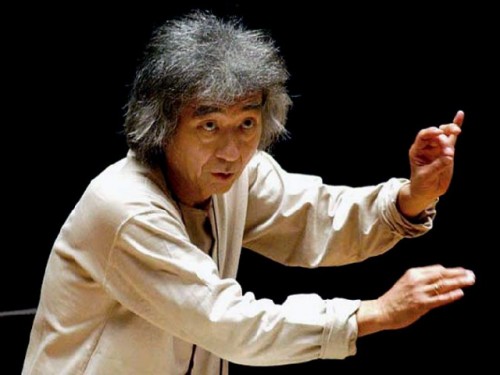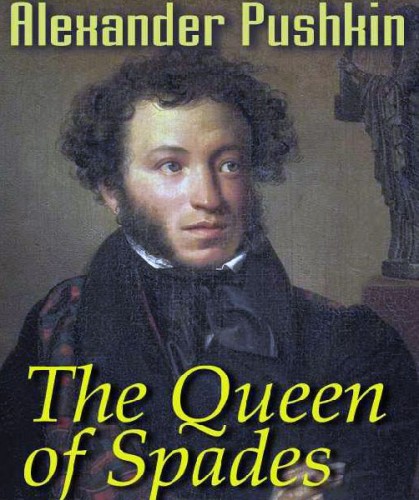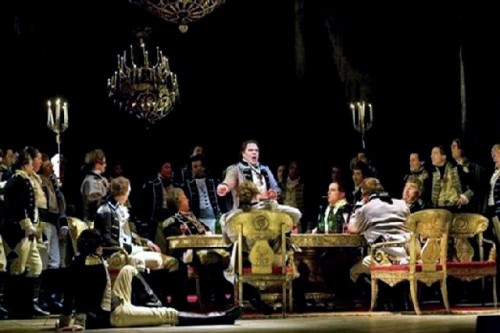Ozawa Conducts Queen of Spades
Tchaikovsky at the Metropolitan Opera
By: Charles Giuliano - Dec 15, 2008
The Queen of Spades (1890)
Composed by Peter Ilyich Tchaikovsky; Based on a story by Alexander Pushkin; Libretto by Modest Tchaikovsky;
Conducted by Seiji Ozawa; Production, Elijah Moshinsky; Set and Costume Design, Mark Thompson; Lighting Designer, Paul Pyant; Stage Director, Peter McClintock; Choreographer, John Meehan
Cast: Ben Heppner (Ghermann), Maria Guleghina (Lisa), Felicity Palmer (The Countess), Vladimir Stoyanov (Prince Yeletsky), Ekaterina Semenchuk (Pauline/Daphnis), Alan Oke (Tchekalinsky), Paul Plishka (Sourin). Piano Solo, Lydia Brown.
The Metropolitan Opera, Lincoln Center, New York
Link to Metropolitan Opera
The audience warmly welcomed Seiji Ozawa back to the Metropolitan Opera to conduct the 1890 "Queen of Spades" by Peter Ilyich Tchaikovsky in the Elijah Moshinsky production which premiered in 1995. It was the 73-year-old Ozawa's first appearance at the Met since his debut in 1992 when he conducted five performances of "Eugene Onegin" by Tchaikovsky. Last summer, at Tanglewood, James Levine, who replaced Ozawa as music director of the Boston Symphony Orchestra conducted a concert performance of "Eugene Onegin" starring Renee Fleming. Link to review
During his 29 years with the Boston Symphony Orchestra, other than that rare Met appearance, Ozawa showed little interest in opera. The music world was surprised when he left Boston, in 2002, to take the position as music director of the Vienna State Opera.
As his performance of "Queen of Spades" revealed Ozawa brings great nuance and range to conducting opera. The Tchaikovsky is particularly rich and challenging as the composer sampled a range of style and influence within the work. While the primary focus is on the arias of its protagonists, the anti-hero, Ghermann (Ben Heppner) who aspires to win the heart of Lisa (Maria Guleghina) the granddaughter of The Countess (Felicity Palmer) these dramatic moments are interspersed between such diversions as court entertainment and events in a gaming house. During the court ball Tchaikovsky evokes the influence of Mozart during the enactment of a Pastoral. In an aria by the Countess Tchaikovsky quotes another Russian composer.
The agenda for Ozawa was to take the diverse stylistic elements of the opera, its slow intense passages when the protagonists appear on a literally bare stage, and then give the full and robust density of Czarist courtly life. There is even a cameo appearance by the Empress Catherine the Great (Shelia Ricci).
It appears that in adapting the short story of Alexander Pushkin for opera Tckaikovsky was multi tasking. On the hand, there is the dark and fatal tragedy of the ambitious, desperate, and unhinged Ghermann and his impossible pursuit of Lisa, and on the other, to create the kind of grandeur and spectacle expected of an opera. This can be a disjointed experience, particularly as Ghermann is a less than attractive and compelling character and leading man while Lisa is less than convincing in tossing off a safe and secure marriage to Prince Yeletsky for an uncertain future with a deranged sociopath. In his initial time alone with her, for example, Ghermann threatens to kill himself if she rejects his love for her. He will later frighten the Countess to death and kill himself when his scheme falls apart. These are hardly star crossed lovers.
It is difficult to feel anything but scorn and pity for Ghermann. This is exacerbated by the performance of Heppner that offers little or nothing to endear us to his character. To make matters worse he lumbers about in a black great coat in contract to the spectacular costumes particularly in the ball and court scenes. His rival, Prince Yeletsky, although unfortunately rather diminutive, which makes him appear less manly, at least is decked out in a nifty uniform. It is said that women love men in uniforms so Lisa goes against type by falling for the man in the drab overcoat.
For its time the Pushkin story of the "Queen of Hearts" may have been quite radical. It begs comparison to the proto-existential writing of Dostoyevsky and his anti heroes of "Crime and Punishment" and "Notes from Underground." One might see Ghermann as a radical scheming through crime and deception to pull himself out of social and economic oppression during Czarist Russia. But he is more a libertine than liberal.
His deranged scheme is to extract from the Countess her secret of the three cards which will earn him the fortune he needs to marry Lisa. When she was young she won a fortune that caused her to be known as the Queen of Spades. Alone in her bedchamber during a botched rendezvous with Lisa, at the point of a gun, he tries to extract her secret. But she dies before it is revealed. In a dream she appears to him and offers the secret of the three cards. But it is a trick. The first two cards turn in his favor but the third does not. It is held up by her mocking apparition.
While the opera is less than cohesive Ozawa brought it together flawlessly. Whatever the plot and character conundrums he gave great expression to the magnificence of the music. There were many triumphant moments and bursts of applause for the arias of Heppner and Guleghina. While Heppner was adequate in the role it has been performed by Placido Domingo. One may image that would be quite a different experience. The aria of Felicity Palmer as the Countess recalling her youth was also an emotional highlight of the evening.
Perhaps most successful about "Queen of Hearts" was its stark, modernist set and spectacular period costumes. The audience roared its approval when the curtain was raised on the ball scene. The lighting by Paul Pyant and set/ costumes by Mark Thompson were innovative and stunning. While the set itself was minimalist and stark this seemed the better to enhance the special effects of the lighting and the opulence of the costumes. It represented the attention to detail and production values that are unique to the Metropolitan Opera at its best.






